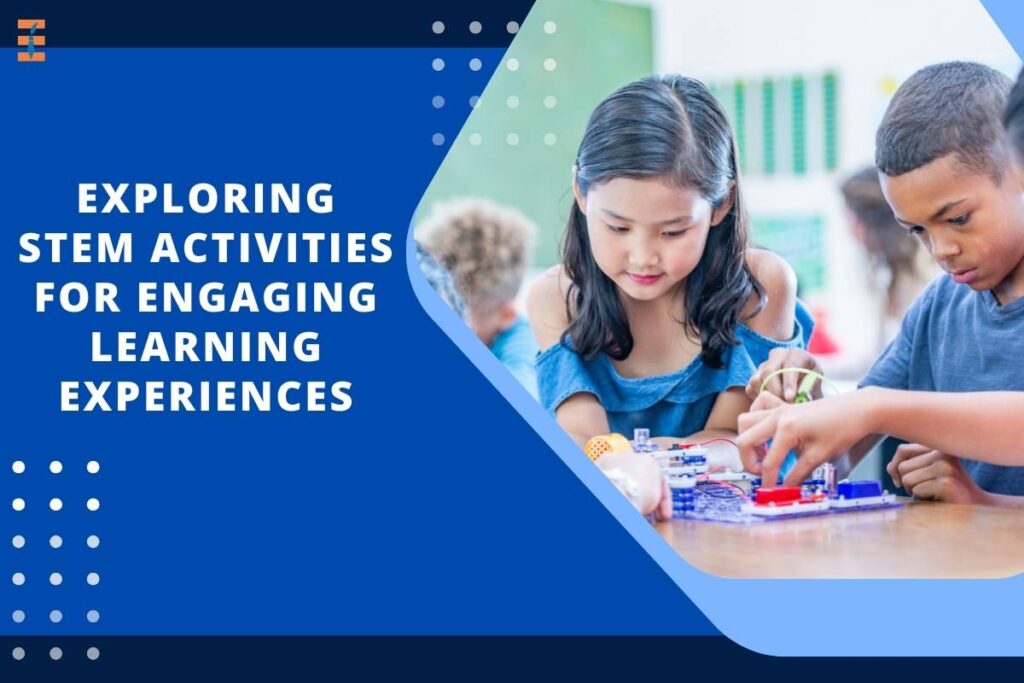In today’s rapidly evolving world, the demand for individuals skilled in science, technology, engineering, and mathematics (STEM) continues to grow. As educators and parents seek to prepare the next generation for success in an increasingly complex global economy, STEM activities have emerged as a powerful tool for fostering critical thinking, problem-solving, and creativity. In this article, we’ll delve into the world of STEM activities, exploring their benefits, implementation strategies, and impact on student learning.
Understanding STEM Activities:
It encompasses a wide range of hands-on, inquiry-based learning experiences that integrate concepts from science, technology, engineering, and mathematics. These activities can take many forms, including experiments, projects, challenges, and simulations, and are designed to engage students in real-world problem-solving and exploration. By fostering collaboration, creativity, and curiosity, it empowers students to develop the skills and mindset needed to thrive in the 21st century.
Benefits of STEM Activities:
1. Promotes Critical Thinking

It encourages students to think critically, analyze information, and apply knowledge to solve complex problems.
2. Fosters Collaboration
Through collaborative projects and challenges, it promotes teamwork, communication, and interpersonal skills.
3. Builds Confidence
Engaging in hands-on this allows students to experience success and build confidence in their abilities.
4. Prepares for the Future
It provides students with essential skills and knowledge needed for success in future careers and endeavors.
5. Ignites Interest in STEM

By making STEM learning fun and engaging, activities spark curiosity and interest in science, technology, engineering, and mathematics.
Implementation Strategies:
1. Integration Across Curriculum
Incorporate STEM activities into existing lesson plans and curricula to reinforce concepts and enhance learning.
2. Hands-On Exploration
Provide students with opportunities for hands-on exploration and experimentation to deepen understanding and retention.
3. Project-Based Learning
Design projects and challenges that require students to apply STEM concepts to real-world problems and scenarios.
4. Use of Technology

Leverage technology tools and resources to enhance STEM learning experiences and facilitate collaboration.
5. Flexibility and Adaptability
Be flexible in adapting STEM activities to meet the needs and interests of diverse learners, allowing for personalized learning experiences.
Impact on Student Learning:
STEM activities have a profound impact on student learning, fostering a deeper understanding of core concepts and promoting the development of essential skills. Through hands-on exploration and inquiry-based learning, students engage actively in the learning process, making connections between abstract concepts and real-world applications. This active involvement not only enhances retention but also cultivates a lifelong love of learning and discovery.
FAQs About STEM Activities:
1. What age groups are suitable for STEM activities?
Ans: It can be tailored to suit students of all ages, from preschool through high school and beyond. The key is to adapt the complexity and scope of the activities to match the developmental level and interests of the students.
2. Do these activities require expensive equipment or materials?
Ans: While some of these may require specialized equipment or materials, many can be conducted using everyday household items or low-cost supplies. The focus should be on creativity, innovation, and resourcefulness rather than on the cost of materials.
3. How can parents support STEM learning at home?
Ans: Parents can support STEM learning at home by encouraging curiosity, providing access to books, resources, and educational toys, and engaging in hands-on activities together. They can also seek out STEM-related events, workshops, and programs in their community.
4. Are STEM activities only for students interested in STEM careers?
Ans: No, it is beneficial for all students, regardless of their career interests. The skills and knowledge gained through these activities, such as critical thinking, problem-solving, and collaboration, are valuable in any field or profession.
5. How can educators assess student learning in STEM activities?
Ans: Educators can assess student learning in STEM through a variety of methods, including observation, performance tasks, project presentations, and reflection. Rubrics and checklists can also be used to evaluate student understanding and proficiency in key concepts and skills.
Conclusion
STEM activities offer a dynamic and engaging approach to learning that empowers students to become critical thinkers, problem solvers, and innovators. By integrating science, technology, engineering, and mathematics in hands-on, inquiry-based experiences, educators can inspire a lifelong love of learning and prepare students for success in the 21st century. Whether in the classroom or at home, STEM activities provide opportunities for exploration, discovery, and growth, unlocking the potential of every learner.

Empowering Women in STEM Scholarships & Shaping the Future
In the dynamic landscape of Science, Technology, Engineering, and Mathematics (STEM), the underrepresentation of women has long been a challenge.

